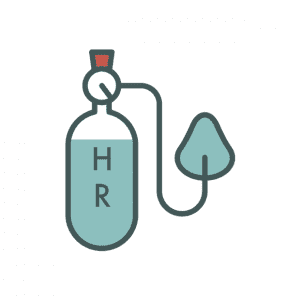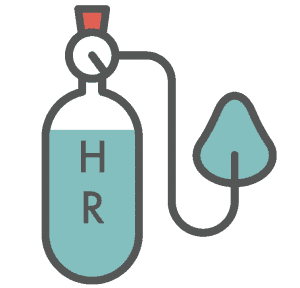Q: From a health, safety and well-being perspective, what are the employer’s obligations about managing a return to work?
From 1 August Government guidance outlines that:
- Office workers may cautiously return to work from 1 August if it is safe to do so.
- The Government’s previous advice that workers should continue to work from home wherever possible and avoid public transport ends from 1 August.
- Any return to work by office staff is at the employers’ discretion. The onus is therefore on employers (not the Government) to decide how staff can work safely. This could mean continuing to work from home, or making workplaces safe by following COVID-secure guidelines instead of working remotely.
- All workers who travel to work if their workplace is open should wear face coverings when travelling on public transport.
The July announcement included an intention for a return to normality before Christmas which may involve dropping the two (or one) metre social distancing rule, provided that COVID-19 is in retreat. The Government previously advised every workplace should be COVID-19 secure and guidelines are now available to help employers ensure workplaces are as safe as possible, including specific guidance for offices and contact centres. Whilst employers should take account of the ongoing guidance from the UK government, employers should also consider the general law, for example by assessing the risks to employees, clients and customers.
Scotland, Wales and Northern Ireland are giving different advice, including staying at home for longer so employers should ensure they keep up to date with different guidelines in different areas.
Consultation
The Prime Minister also mentioned that working from home or in offices should be undertaken in consultation with workers. It is sensible if employers consult with their employees about any return to work and the proposed new infection control arrangements; good communication is essential. Employers should discuss return-to-work issues with individual employees before any physical return to office as part of a sensitive and supportive conversation with their line manager. This should be part of a broader re-induction process that takes on board any adjustments or ongoing support that people may need following lockdown. Employee engagement will help identify support and ensure teams feel more confident about returning. Where relevant employers should also seek union input for any return to work measures.
Risk assessments
Employers should undertake risk assessments which will need to be reviewed as government advice continues to change. You may wish to refer to the Health and Safety Executive website for more information. A risk assessment has a crucial role in ensuring a safe return to the workplace process. The end goal is to adopt appropriate control measures which reduce or remove the risks of contracting Covid-19 when returning to work. The risks around visitors entering the workplace, such as customers should be assessed too as there is also a legal obligation to ensure their health and safety.
Health and safety duties
Employers have a contractual duty to take care of employees’ health and safety and other statutory duties too including: Implied duty to protect the health and safety, of all employees.
- Duty to look after both the mental health and physical health of employees.
- Duty to protect members of the public, clients, customers and contractors.
- Duty to manage the health and safety risks from the workplace itself including equipment such as hand driers and air conditioning systems which may circulate viruses although there has been little research on this. Other workplace issues include cleanliness and washing facilities.
- Provision of safe systems of work possibly including provision of PPE subject to availability.
- Information and training (including reminding employees of their responsibilities in meeting health and safety requirements).
Well-being
Employers’ health and safety duties extend to mental health and well-being as well as physical infection control measures. Risk assessments should cover managing mental health and well-being aspects too. You may wish to refer to the Health and Safety Executive stress risk assessment tools.
Employees with new working arrangements in the workplace and working from home can suffer from stress or mental health issue maintain contact and look for signs of problems. Employees who have been furloughed should be included.
As well as implementing or reviewing policies and procedures and proactively monitoring and keeping in contact, employers should point staff to other support that is available. Managers may need fresh training in recognising the symptoms of poor mental health so they can signpost to early intervention and expert support such as occupational health, an employee assistance helpline.
If an employer becomes aware that particular employees are struggling with their mental health, they should conduct individual risk assessments for both home and workplace workers. Individual risk assessments will be warranted in many other cases too.
Home working
Employers have the same health and safety responsibilities towards those working from home as for any other workers, including physical mental health see the guidance on protecting home workers.
Q: What steps should employers take before employees return to work?
On 10 May 2020, the Government started to outline plans to enable certain sectors in England to return to work, culminating in the Prime Minister’s announcement that from 1 August employers have more discretion, and can make decisions about how their staff can work safely. Employers can decide that staff who have previously operated from home can continue to do so or they can follow official guidance on returning to the workplace which continues to emerge. The devolved administrations in Scotland, Wales and Northern Ireland have maintained a longer period of lockdown but progressive changes apply in those regions too.
Employers should attempt to reduce risk for employees being exposed to coronavirus, keep their options open and have the capability to adapt plans as the situation and advice evolves. A number of key considerations that employers must check before asking employees to return to work are set out below.
Comply with current Government guidance
Employers should check the current government advice on returning to work including the Working safely during coronavirus guidance for specific sectors, including for offices and contact centres. Employers must make attempts to implement this guidance, otherwise employees may be entitled to refuse to return.
Undertake a thorough risk Coronavirus specific risk assessment
Employers should keep risk assessments under review and should keep evidence that safety measures were implemented and complied with. They should also consider who they are asking to come into work and if it’s safe to so. This will entail considering the government’s specific guidance to employers covering measures such as increased workplace cleaning, changing office layouts, keeping a safe distance at work, supplying safety equipment etc. Employers who have complied with their duty of care, conducted thorough risk assessments and implemented safety measures, will be in a stronger position to ask employees to return to workplace.
Review written health and safety policy
Employers should have a written policy on health and safety if they have more than five employees. For those with fewer than five employees, there should still be a health and safety policy, although it doesn’t have to be written down. The arrangements section in the policy should say how the employer will meet its commitments, including elimination or reduction of the risks and hazards in the workplace.
Take steps to comply with health and safety obligations
Employers have a duty to protect the health and safety of employees, and under the Employment Rights Act (s.44), employees are further protected if they refuse to return to work because they reasonably believed there was a serious and imminent danger to themselves or others. Coronavirus classifies as a danger and is a potential reason not to return to work. Employers will need to keep evidence to show they attempted appropriate measures to provide a safe working environment.
Employees could insist on staying at home, refuse to return to the workplace or could choose not to do certain tasks if they feel employers have not taken appropriate measures to provide a safe environment.
Provide training and communicate with employees about the necessary steps
Under the Health and Safety at Work etc Act 1974, employers must provide appropriate information, instruction, training and supervision to ensure the health and safety of employees. Further legislation requires training following exposure to new or increased risks, which includes coronavirus, and consultation with employees or their representatives on issues relating to health and safety.
Take reasonable steps
Remember the Health and Safety Executive (HSE) will be doing spot checks and issuing sanctions to ensure that workplaces are safe, and that employers have taken reasonable action.
Insurance
Employers may wish to check their employer’s liability, management liability or directors and officers (D&O) insurance cover as well. If employers fail in their responsibility to provide a safe working environment and there is a genuine health and safety risk from being required to attend work, this can amount to a breach of the duty of care and of the implied term of mutual trust and confidence.
This links to potential constructive unfair dismissal and disability discrimination claims. If employees contract coronavirus as a result of inadequate steps being taken there could also potentially be personal injury claims against the employer.
Q: What is the legal and moral position on encouraging vs mandating return?
The legal and moral position for employers on encouraging employees to return is a difficult decision to make. Whilst the Government in England is giving employers more discretion from 1 August onwards and asking them to make decisions about how their staff can work safely, different advice applies in Scotland, Wales and NI. Working safely can mean continuing to work from home, or it could mean making workplaces safe by following COVID-secure guidelines. Whilst employers can move from working from home to a return to the workplace there is no legal obligation to do so.
Employers have to undertake a balancing act taking into account:
- managing the health risks employees face in the workplace and travelling to work from potential exposure to the virus
- financial pressures of their business
- the fact that the furlough scheme has reduced payments before coming to an end
- the potential £1,000 bonus payable to employers in January for retaining certain previously furloughed employees
- the safety risks that new working practices may present to employees and others whilst the threat of infection from COVID-19 remains
- problems faced by those needing childcare or who are clinically extremely vulnerable.
We would urge businesses to ensure they can meet these three principles as recommended by the CIPD before bringing their people back to the workplace:
Is it essential? If people can continue to work from home employers should consider them continuing to do that for the foreseeable future. If they cannot work from home, is their work deemed essential or could the business continue to use the Government’s Job Retention Scheme for longer, giving them the time needed to put safety measures and clear employee guidance and consultation in place?
Is it sufficiently safe? Employers have a duty of care to identify and manage risks to ensure that the workplace is sufficiently safe to return to. Employers should take their time with gradual returns to work to test health and safety measures in practice and ensure they can work with larger numbers before encouraging more of their workforce back.
Is it mutually agreed? It’s vital that there is a clear dialogue between employers and their people so concerns, such as commuting by public transport, can be raised and individuals needs and worries taken into account. There will need to be flexibility on both sides to accommodate different working times or schedules as ways of managing some of these issues.
Q: How do we respond to an employee who is needed at work but has childcare issues despite their child’s school being open?
This situation could arise because:
- The school is open but the employee doesn’t feel comfortable sending their child in.
- Their child’s school hours are limited.
- The employee can’t send their child back because they are concerned about a vulnerable adult at home (although formal shielding stops from the end of July).
If an employee is needed at work but has childcare issues despite their child’s school being open, employers should proceed carefully. Ultimately employers may be able to require employees to put other childcare in place so they can return to work, however the initial approach should include fully discussing matters and exploring alternatives.
In all three of the different scenarios dealt with below, employers should listen to, and attempt to address, the employee’s concerns. Alternative options to consider include whether the employee can be redeployed to a homeworking role, or put on furlough leave, unpaid leave or unpaid parental leave. Other options include annual leave and statutory time off for dependants. Flexible working, part-time working, adjustments to hours and duties and so on, may also be relevant. All these alternatives would need to be agreed. Some employers are reducing the numbers of staff in the office at any one time. Any agreed changes are likely to be temporary as school attendance is compulsory again from September onwards.
The school is open, but the employee doesn’t feel comfortable sending their child in
Some employees may refuse to return to work once schools re-open if they feel schools (or their workplace) are unsafe. Employers cannot insist that employees send their children back to school. It is not the employer’s decision whether employees’ children attend school. Attendance for the 2020 summer term was not compulsory but attendance for the Autumn term is mandatory.
Employers may be able to require the employee to come into the workplace if it is safe, in which case the employee will have to try and make alternative childcare arrangements.
The employer should listen to the employee’s concerns and consider employees’ proposals about working and accommodate them as far as practicable. Options to consider include continued working from home although Government guidance from 1 August onwards is that employers can re-open workplaces as employers have discretion to make decisions about how their staff can work safely.
If employers decide to continue home working to assess whether there is a second wave of the virus then employees with younger children may find working from home difficult, such employees should be able to access their normal childcare or may be able to do work at other times of the day, or work when a partner or family (if any) is available to share childcare. Other options include those set out above.
Childcare options
Advice on self-isolation and social distancing, especially for grandparents with clinically vulnerable conditions, make it more difficult for employees to make alternative arrangements for the care of their children, although other members of the same household may be able to assist, or childminders could be used.
The employee is worried about sending their child back because they are living with a vulnerable adult
If employees are concerned about sending their children back to school because they are worried about a vulnerable adult at home, then the employee may want to keep the child at home after the summer holidays. Depending on the nature of the vulnerability, and the age of the child, the person being shielded may be able to provide childcare or home education.
Employers can attempt to discuss matters with employees and reach an agreed solution. This could consist of the alternative options referred to above, including working from home, adjusted working hours, perhaps adjusted tasks that can be undertaken at home or limited furlough leave. Statutory sick pay is an unlikely option but depends on the exact situation.
If none of these options are feasible, the employee will have to try to make alternative childcare arrangements.
If an employee lives with a highly vulnerable person there is a risk of an associated discrimination claim if employers require those employees to return to work without taking the vulnerability of the shielded person into account even after formal shielding ends. Associative discrimination claims may be attempted if an employee is treated less favourably due to the disability of their disabled household member. An employee can claim associative discrimination if they refuse to attend work because someone in their household was shielding or is highly vulnerable. Normally this relates to workplace risks, but the claim could also be attempted because of childcare issues linked to the shielding person.
Risks of disciplining and dismissal
Before the pandemic, an employee refusing to attend work would lead to disciplinary procedures and ultimately dismissal. This remains a final option, but there are many risks in doing so, and alternative solutions should be exhausted first. If all other options fail, in all employment contracts there is an implied term that employees must follow their employer’s lawful and reasonable instructions.
Employees can potentially be disciplined as a last resort if a continued long-term refusal to attend work is unreasonable. Schools will reopen in September, and if employees still refuse to come into work then, this is likely to be unreasonable.
There is a risk that disciplining employees for refusal to work due to childcare issues will result in a sex discrimination claim. Some employees with mental health issues may be especially anxious about their children or travelling on public transport or returning to work themselves. If an employee’s mental condition constitutes a disability the employer should take extra care in attempting to accommodate their request. Compensation for employees who are found to have been discriminated against is uncapped.
Employers should also remember that as well as concerns about their children, employees may have concerns about the safety of the workplace. If employees’ concerns relate to returning to the workplace rather than childcare, then they can claim to have suffered a detriment on health and safety grounds, or claim automatically unfair dismissal if the employee reasonably believes there was a serious and imminent danger which led to their refusal to return to work. Whistleblowing claims may also be attempted.
Q: What do employers need to know about the reopening of schools?
Employers may be faced with employees stating they cannot return to the workplace due to childcare issues. Both employers and employees should fully understand local authority and Government advice concerning returning to work and the reopening of schools as national and regional plans with respect to schools are changing as the pandemic progresses. There is a great deal of regional variability. In summary, schools closed on 23 March, except for key workers’ children and vulnerable children. There was some staged re-opening for certain year groups in the summer term. Primary and secondary schools are scheduled to fully re-open from September.
Employers should undertake risk assessments and take the health and safety steps necessary to ensure that they have done everything within their power to ensure the workplace is safe to return to.
Is school compulsory?
It was not compulsory for parents to send their children to school during the 2020 Spring and Summer terms, even if the children were in the relevant year groups undergoing staged reopening. However, financial penalties for parents who don’t send eligible children back will be applicable in the new academic year with the reintroduction of mandatory attendance.
School plans by year group and nation
Employers should be aware that not all employees can send their children back to school immediately. Relevant factors include the ages of the employees’ children and the local authority policy.
School plans
For employers who wish to try and address employees’ concerns about schools, there is extensive government guidance for both schools and parents including provision for classes of no more than 15 children with one teacher with staggered breaks, lunches, arrival and departure times. Primary school heads are still planning for the last month of term while only allowing 15 children per classroom. There is also guidance on ventilation, water systems, increased cleaning and reduced use of shared items and discouraging taking home things like books.
Q: Some of my employees have children returning to school and others do not. How do I manage this consistently?
Tension may arise in the workplace if some employees decide to send children back to school but others decide to keep the children off even though attendance is mandatory and refuse to return to work as a result.
Employers must behave fairly. Some employees may help by volunteering to return and employers should keep a record to show that they have done so.
Problems will arise if there are perceived inequalities of treatment. Ultimately employers may need to manage a situation where some employees continue to work from home and others return to the workplace perhaps incurring childcare costs. Employers have to balance continued working from home against trying to create a safer working environment for employees. The balance is different for every business and the risk can differ from week to week and in geographical locations, for example a re-imposition of complete lockdown in Leicester in late June.
Employers may have to decide which employees are needed to return to the workplace, if at all, taking into account factors such as:
- proximity
- role
- availability of transport for employees
- clinically extremely vulnerable workers who were shielding or who are clinically vulnerable
- caring responsibilities and ages of children
- those with a disability and the duty to make reasonable adjustments.
Those fully recovered from coronavirus should not be used as a sole criterion in planning those who return as it is not known how long immunity (if any) will last.
Are staff all needed in the workplace?
Employers should assess risks and carry out a careful analysis of their staffing requirements deciding how many are physically needed in the workplace. Although Government advice leaves working from home or in the workplace to the employer’s discretion from 1 August different advice applies in Scotland, Wales and Northern Ireland.
As part of staff planning, employers should continually consult government websites for updated advice to ensure they understand what’s happening regarding workplace and school re-openings and advice.
For further information on recommendations for different types of vulnerable people, see our question How do we decide who comes back and when (taking into account people who have had coronavirus already, those who need shielding, personal preference etc)? or government advice on COVID-19: guidance on shielding and protecting people defined on medical grounds as extremely vulnerable.
Q: Where does liability sit if employees catch coronavirus at work or on the way to work?
Government advice now states that from 1 August onwards employers have more discretion about how their staff can work safely. This could mean continuing to work from home, or making workplaces safe by following ‘Covid-19 Secure’ guidelines. This advice applies in England but different advice applies in Scotland, Wales and NI.
Liability
Employers have existing contractual and statutory duties to take care of employees’ health and safety. If employees can prove they caught coronavirus at work and the employer cannot show they have taken appropriate steps to prevent this, the employer could be liable for the employee’s losses. Some employees may be unable to work for some-time and some may have more serious long term health implications. Depending on the levels of Covid-19 in the UK population, and the success of the government’s test and trace system it will be difficult for employees to prove they contracted the disease at work. Although it should be rare, some employees may be able to establish the employer unnecessarily exposed them to danger and risk. Potential liabilities include health and safety protections, unfair dismissal and discrimination claims.
In the medical research, health and care sectors workers who subsequently develop coronavirus may have reasonable evidence that the exposure arose from the workplace. In other contexts, it will be harder to prove. However, there are many potential liabilities for failure to take care of staff, particularly if they are especially vulnerable. It is better for employers to be able to show that appropriate protections and adjustments were taken. For further details of employers’ duties see the FAQ on health and safety following return to work.
Managing risks
Employers should keep records to show that they have conducted appropriate health and safety risk assessments to identify and manage risks appropriately and that they have:
- Undertaken workplace safety audits.
- Updated policies and procedures.
- Identified potentially hazardous situations.
- Made changes to reduce exposure.
- Trained employees and communicated new policies and procedures to them.
- Monitored the workplace to ensure compliance by employees with new health and safety rules, policies, practices and procedures.
- Performed random checks and kept ongoing compliance reports in regular ongoing efforts to ensure compliance.
- Encouraged reporting of problems and have an open environment that welcomes feedback.
Some relevant legal aspects are set out below.
Other duties at work
As well as the overriding duty to care for employees’ health and safety the following duties apply:
Risk assessment: Employers who have employees returning to their usual workplaces will need to ensure that they have conducted appropriate health and safety risk assessments to identify and manage risks appropriately. All employers in England should follow Government and Public Health England advice guidance to manage the workplace environment, for example by implementing social distancing measures wherever possible as these are expected to remain in place until December. Government advice on how to manage workplace risk and make your businesses ‘Covid-19 secure’ is available on the Government website.
Reporting: The Health and Safety Executive (HSE) has issued guidance on reporting cases of Covid-19 under the 2013 Reporting of Injuries, Diseases and Dangerous Occurrences Regulations (RIDDOR). Reports will only be needed if:
- A worker has been diagnosed as having coronavirus and there is reasonable evidence it was caused by work exposure. This must be reported as a case of disease.
- An unintended incident at work has led to someone’s possible or actual exposure to coronavirus, this must be reported as a dangerous occurrence.
Such incidents are more likely to occur in a laboratory, health or care setting. HSE guidance does not suggest that every case of Covid-19 in the workplace is reported and it is unlikely that extensive RIDDOR notifications will be made. Employers must consider the individual circumstances when they decide whether to report.
If employers do not take appropriate steps to comply with the relevant law and guidance such as social distancing at work or ensuring workers in formerly ‘shielded’ or vulnerable categories follow NHS advice to self-isolate, the HSE could simply provide advice or issue enforcement notices. The HSE will be conducting spot inspections and responding to reports from concerned individuals. In Scotland and Wales the police can enforce social distancing in the workplace.
Travelling to work
The Government advice in England (but not Wales, Scotland or NI) from 1 August onwards is to give employers more discretion about how their staff can work safely. This could still mean working from home, or making workplaces safe by following COVID-secure guidelines and maintaining social distancing. It will be difficult for employees to prove that they contracted the disease travelling into work and that the employer should be liable. However, employers may be liable if employees can show that they were unnecessarily exposed to risk when there were alternatives available.
Government advice is to use public transport wearing mandatory face coverings and employers may also consider, where possible:
- Provision of parking spaces.
- Secure bicycle parking.
- Shower facilities.
- Flexible or staggered working hours by agreement to enable employees to avoid more crowded public transport.
- Special provisions for vulnerable staff eg elderly, pregnant, and those with impaired immunity helping them to avoid public transport or its use at peak times.
Q: Social distancing is going to be very difficult in our workplace, what should we do?
Employers need to put people first and safeguard their health and well-being; continued homeworking is an option every role that can be carried out remotely. If social distancing can’t be done properly or safely, employers should act responsibly in line with their legal obligations to ensure the health and safety of both their employees and any visitors to their site. Employers should consider who really needs physically to be in the workplace. It may be possible to reorganise any non-essential workplace based work, as people’s health and safety is paramount. Employers should listen to people’s concerns about returning to work and allow for a period of adjustment and putting plans in place. For many businesses, easing lockdown restrictions will be a more challenging, complex and drawn-out process than the original lockdown.
Employers with health and safety and occupational health and facilities management teams should work closely with them and refer to the government website for the latest advice, including the Covid-19 secure workplace guidelines. They should also communicate and consult with employees about the measures to be introduced, including with any recognised trade unions and/or employee representatives.
As social distancing is likely to continue to apply for some time, to ensure that staff numbers allow for this, employers can consider:
- shift working in teams
- office redesign
- home working
- other atypical working patterns.
These methods will reduce the number of people in the workplace. Changes to contractually agreed working hours will usually need employees’ agreement.
Government advice
Everyone should follow the new government ‘Covid-19 Secure’ guidelines. As well as attempting adjustments to help maintain social distancing, guidance on hygiene is essential as evidence suggests that the virus can exist for up to 72 hours on some surfaces. Government advice has suggested:
- Wearing face coverings in enclosed spaces where social distancing isn’t possible and is compulsory on public transport and when visiting hospital or attending as an out-patient from 15 June. From 24 July face coverings are mandatory in shops and supermarkets as well. Children under 11, some disabled people and those with breathing difficulties are exempt. Medical standard PPE, including masks, should continue to be reserved for health and care workers.
Other key recommendations include
- Frequent cleaning, especially communal surfaces like door handles or lift buttons and communal areas like bathrooms, kitchens and tea points.
- Ventilation of indoor spaces, as evidence suggests the virus is less likely to be passed on in well-ventilated buildings and outdoors. As well as leaving windows open, external extractor fans can maximise the flow of fresh air.
- Washing clothes regularly. Changing clothes in workplaces should be considered where there is a high infection risk or highly vulnerable people, such as in a care home.
- Avoiding crowds where possible and allowing the use of more entrances and exits to buildings and staggering entry and exit points.
- Reduction of the number of people in a work setting by changing shift patterns and rotas. Employees can be matched with the same team each time as well as splitting people into smaller teams. You can refer to our flexible working measures guide for more information on staggered shifts.
Other practical steps
Safe work practices to limit exposure to Covid-19 at work include both overall control measures and minimising workers exposure to each other. Flexible leave and remote working should still be encouraged wherever possible to limit presence at the workplace. The following are just some examples of control measures depending on the nature of the role and workplace.
Reducing numbers
- Staff can continue work from home at the employers’ discretion.
- Anyone with symptoms (or who lives with someone with symptoms) should stay at home.
- Return to work procedures need to be co-ordinated with any other businesses who share the building.
- Consider delivering some services remotely so that that only workers who are essential to the job are present at the workplace.
- Adjust working hours (by agreement) or stagger start and end times. There could be two staff groups with half working from home one week and half in the office the next.
- Reduce large unnecessary meetings and minimise the presence of third parties such as clients or customers.
- Encourage online or telephone orders, contactless delivery and physical distancing both inside and outside the premises.
- Stagger lunch and tea breaks to reduce the number of people sharing communal staff rooms.
- Limit numbers entering toilet facilities so that only one person at a time enters.
- Working from home may still be considered for vulnerable workers including older people, pregnant women, those with chronic conditions (including lung or heart problems, diabetes, cancer treatment or the immunosuppressed). Workers with close family members who are at high risk may also need special arrangements.
Physical barriers
- Reduce physical contact between workers and distance or isolate workers whenever possible.
- Reassess the layout of work stations to ensure safe distances.
- Reassess how many workers can be accommodated and use spare offices and meeting rooms to spread staff out.
- Consider barriers and empty desks between workers in the workplace as well as two- metre distances between staff. Plastic sheeting, partitions, and solid storage units may be appropriate.
- End hot desking.
- Encourage pick-up or delivery of goods outside the premises leaving goods to quarantine for a period where possible.
- Provide anti-bacterial gel, PPE, masks, sanitation gel and wipes for all staff where possible and in appropriate sectors, in line with the latest Government advice. Train workers in correct use of PPE, facemasks and gloves if appropriate.
- Consider separating facilities such as toilets, cafeterias etc for staff and visitors.
Training and communication
- Communicate and consult with employees and line managers on plans to reopen and about any new rules and policies that apply. Refer to the Government guidelines where appropriate.
- Involve and consult with recognised trade unions and/or employee representatives where appropriate, especially where changes to working hours and other terms and conditions are needed.
- Send email reminders and display signs around the workplace to raise awareness of measures adopted.
Cleaning
- Increase the regularity of deep cleaning especially desks, surfaces, door handles, tools and other surfaces that people touch regularly. Leave doors open (subject to fire risks).
- Advise workers to wash their hands frequently and effectively and restock facilities regularly.
- Ensure waste bins lined with a plastic bags so that they can be emptied without touching the contents.
Employer should keep checking the government website for the latest guidance and remember that the physical, emotional and mental well-being of the workforce must remain the key principle behind any plans to return to the workplace.
Q: How do we decide who comes back and when (taking into account people who have had coronavirus already, those who are vulnerable, personal preference etc)?
From 1 August onwards Government advice is that employers have discretion to decide how their staff can work safely. This could still mean those who can work from home should continue to do so or can mean making workplaces safe by following COVID-secure guidelines. Different advice applies in Scotland, Wales and NI where people are all currently advised to continue to stay at home.
The Government has released guidance outlining how workplaces can operate safely during the pandemic and so many employers will now be looking to prepare for a return to the workplace. Part of this will be deciding which employees can safely return to the workplace.
Selecting employees
If employers are selecting certain employees to return to the workplace (rather than requiring everyone to do so), employees must be selected fairly. Some employees may volunteer, and employers should keep a record to show that they have done so. You may wish to work with an HR consultant/professional to ensure you are selecting people fairly to return to work. Decisions will also have to be based on factors such as availability of transport for individual workers to get to a physical workplace.
Employees who have fully recovered from Coronavirus may seem an obvious choice to return to work but employers should not use this as a criterion. There is currently little evidence about the extent to which people who have recovered from COVID-19 and have antibodies are protected from a second infection. It is not known how long immunity (if any) will last although antibody testing is becoming more widely available. In addition, some people who have had the virus will be left with long term health difficulties.
Clinically extremely vulnerable workers who were shielding and those with caring responsibilities should be prioritised to remain at home if home working is continuing, taking account of the risk of age, sex and disability discrimination and, in particular, the duty to make reasonable adjustments for workers suffering from a qualifying disability. Employers need to consider how to balance the needs of individual employees with showing fairness and consistency across the workforce, to promote inclusion as much as possible.
For further information on the different recommendations for different types of vulnerable people see our FAQ on people returning to work that are shielding or the latest Government advice on shielding. The advice is updated because the shielding programme is expected to be paused on 31 July.
Employers who are making decisions about who comes back may wish to check they are protected by their employer’s liability, management liability or directors and officers (D&O) insurance.
Q: How do we go about staggering working hours to ensure not all staff are in at the same time?
To ensure staff are not all in at the same time there are many methods that can be adopted.
- The Government advice (dated 11 May) suggested that employers should consider staggering working hours thereby reducing demand on the public transport network, walking or cycle where possible. Although advice is no longer to avoid public transport as long as face coverings are work employers may still wish to expand bicycle storage facilities, changing facilities and car parking to help.
- To reduce the risks of transmission in the workplace employers should limit the number of people that any given individual comes into contact with. Employers can support this where practical by changing shift patterns and rotas to keep smaller, contained teams.
- To implement the Government advice, groups of employees on staggered shifts, with different hours, days, weeks and locations are all options. All forms of flexible working can be considered, including remote working. You can refer to our guide on flexible working measures for more information on staggered shifts.
- Employers need to consider the legal position of any revised working arrangements. Employees’ consent will normally be required and there should be a communication process, information and consultation about the changes. Flexibility is key and if employees understand that their safety and wellbeing is at the core of any changes this should help achieve consent. The best approach to change is by agreement with employees; fully explaining the situation and likely period of the changes, discussing any concerns raised.
- Any contractual changes should be implemented very carefully bearing in mind contractual provisions and different legal rights (for example, working hours, rest breaks).
- Those attending for some hours in the workplace must continue to observe social distancing, high standards of hygiene and the other steps suggested in the FAQ about social distancing. Employers can refer to the Government guidance.
- Employers who had to stay open during lockdown may be able to offer guidance to other employers who are now considering some employees returning to work on site. Visit the CIPD community to share ideas and experiences.
Q: What if our people can’t come back – or don’t want to travel on public transport?
The current Government advice in England (but not Wales, Scotland or NI) from 1 August onwards is that employers have discretion to decide how their staff can work safely. This could still mean those who can work from home should continue to do so or can mean making workplaces safe by following COVID-secure guidelines and maintaining social distancing. Other points include: Other points include:
- The Government will provide new statutory guidance to encourage local authorities to widen pavements, create pop-up cycle lanes, and close some roads in cities to traffic (apart from buses).
- Face coverings must be worn on public transport and transport operators should follow appropriate guidance to make their services Covid- 19 Secure.
Face coverings are now also mandatory from 24 July 2020 in shops and supermarkets as well. Children under 11, some disabled people and those with breathing difficulties are exempt. They are also advised in enclosed spaces where social distancing isn’t possible and where people encounter others they do not normally meet.
Employees may understandably show confusion at the speed at which the guidance has changed which may increase their anxieties.
It is sensible if all unnecessary work-related travel is minimised; availability of safe public transport should be taken into account in any decisions to return to the workplace. Employers can stagger rotas and start and finish times to promote physical distancing, provide extra parking and extra bike storage. As well as this, continuing home working may be preferable provided that some or all of an employee’s work can be performed remotely. Work duties can be altered by agreement to accommodate those who are anxious to avoid crowded public transport to get to work.
From a legal standpoint, on the one hand, under the Employment Rights Act 1996 employees can claim that they have suffered a detriment on health and safety grounds, or claim automatically unfair dismissal if the employee reasonably believes there was a serious and imminent danger which led to their refusal to return to work. On the other, in all employment contracts there is an implied term that employees must follow their employer’s lawful and reasonable instructions. Employees could therefore face disciplinary action if their continued refusal to attend work is unreasonable. However, avoiding public transport seems reasonable, especially when the government has advised against it. There is at least a risk that disciplining employees for refusal to travel may result in a health and safety detriment, unfair dismissal or discrimination claim.
The employer should listen to the employee’s concerns, especially if they are vulnerable or have a disability and consider their proposals and accommodate them as far as practicable. Employers should also remember that employees with some mental health issues may be anxious about travelling and if their mental condition constitutes a disability the employer should try and accommodate their request.
Employers can discuss other options such as unpaid leave or use of annual leave to achieve a phased return.
Q: I need to make redundancies when the teams get back, how do I go about doing this as some that have stayed on may be selected?
If employers need to make redundancies when the teams get back (as a result of an actual or anticipated decline in workload) normal redundancy selection and consultation procedures apply. Advance planning and communication are essential explaining to all staff the reasons and selection criteria etc.
Employers should fully explore alternatives and choose their redundancy selection pool carefully; this can include staff who have been furloughed, those working from home and those in the workplace. Just because staff were furloughed does not mean they should be selected in preference to others.
Employers should also consider the job retention bonus of a one-off £1,000 payment for employers who keep their staff in work after the furlough scheme ends at the end of October. If employees are kept in continuous work, earning more than £520 a month on average (the lower earnings limit) from the end of the October to the end of January 2021. The government will pay the sum in February 2021 for every member of staff brought back. This is intended to encourage employers to avoid redundancies after the furlough scheme ends.
Employers who decide there is no alternative to redundancy should inform and consult and carry out a fair redundancy process. Depending on how long they have been employed employees with one or two complete continuous years of service may have claims for unfair dismissal if their employment is terminated without fair procedure.
If 20 or more employees will be redundant within a 90-day period, there should also be collective consultation, in addition to consultation with each individual employee. There must be at least 30 days’ consultation for 20-99 redundancies or if there are 100 or more redundancies, there must be a minimum of 45 days’ consultation in Great Britain (90 days in Northern Ireland). If there are no existing trade union or employee representatives in place employers will need to ensure appropriate employee representatives are elected before this. There must also be notification to BEIS before giving notice to terminate any of the relevant employees’ contracts (similar time limits apply).
Q: How do we get across to those who want to return to work for their wellbeing and social interaction, that with social distancing, the return to the workplace could make them feel worse?
It’s really important that employers manage people’s expectations about what a return to a physical workplace will mean in practice. Meeting an employer’s obligation to provide a safe working environment will mean putting in place onerous but vital health and safety measures to manage the risks from COVID-19.
This means that the workplace will look and feel very different to many employees when they return. Many of the elements people enjoy as part of their working experience, such as opportunities for human interaction, will be greatly affected by the physical distancing measures in place. This will include screens separating workstations, as well as the closing off of communal areas such as canteens and break out areas if necessary.
Managers should be guided to have open and supportive one-to-one discussions with every individual as a first step of the return-to-work process. This conversation should be two-way: as well as communicating the changes that have been implemented to keep the workplace safe, it should provide an opportunity for individuals to air any worries they have about returning to a workplace. The aim should be to reassure employees of the organisation’s steps to ensure a safe return, and prepare them for the changes that will have taken place.
All staff should also be made aware of their own responsibilities to ensure a safe working environment for themselves and their colleagues and customers.
Q: How do we assess people before they return in terms of wellbeing/mental state?
The risks to people’s health from this pandemic are psychological as well as physical. Everyone will have experienced a challenging time during lockdown and many will have experienced anxiety due to a range of different factors, depending on their individual circumstances. People’s mental health is fluctuating, so there needs to be an ongoing conversation about well-being as part of every manager-employee one-to-one.
Individuals who have a pre-existing mental health condition, such as anxiety and depression, should have been offered support during this health crisis. But many others will now have developed a mental health condition, and so support such as an employee assistance programme or counselling should be offered to all employees.
The best way to assess people’s mental wellbeing before a return to a physical workplace is to encourage a culture where people feel safe to talk about their feelings and seek help. Hopefully, managers will have the kind of trust-based relationship with each team member whereby an employee can raise their concerns.
Managers need to listen with empathy and treat all concerns seriously, and signpost to help if needed. They also need to be prepared to discuss any changes to someone’s role or working arrangement to help ease them back to work. Many people will need a period of readjustment and so a phased or gradual return could be needed.
Managers could also be feeling vulnerable and so it’s very important that employers ensure they are properly supported to support employee wellbeing, and can address their own wellbeing concerns.
Q: How do we deal with the commuting risk and anxiety for many colleagues?
Government guidance has previously encouraged cycling or walking to work wherever possible although public transport can now be used with face coverings. Employers can also implement measures such as staggering arrival and departure times to reduce crowding, and can provide additional parking/bike racks.
However, many people rely on public transport to get to and from work, and may not have a car or bike. Public transport can become congested, particularly during peak rush hours, making it very difficult to maintain physical distancing from other commuters. The availability of public transport is also an issue, as trains, buses and tubes have been running a much-reduced service. Many employees are therefore likely to have legitimate concerns about using public transport, especially as government advice says to avoid it.
Any decisions about whether or not an individual employee should return to a workplace needs to factor in wider considerations such as their daily commute and ability to arrive safely. Every employee should have the opportunity to discuss any concerns about their commute with their manager as part of the return-to-work process, which should take place in advance of the day that individual is expected to return.
We’ve tried to think of all the questions you may have about returning to the workplace, but we recognise that every business is different, and your one burning question isn’t answered here. If you have something you’d like our help with, or want to discuss any issues relating to this topic, then please don’t hesitate to get in touch, or you can book a call with us here; https://bit.ly/CallMerakiHR
DISCLAIMER: The materials provided here are for general information purposes and do not constitute legal or other professional advice. While the information is considered to be true and correct at the date of publication, changes in circumstances may impact the accuracy and validity of the information. Meraki HR is not responsible for any errors or omissions, or for any action or decision taken as a result of using the guidance. You should consult the government website for the very latest information or contact a professional adviser for legal or other advice where appropriate.





















